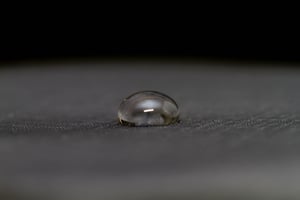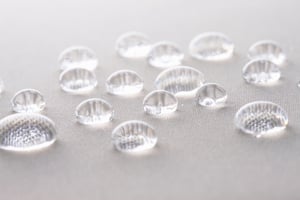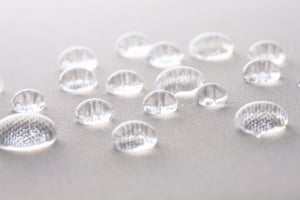Introduction Have you ever wondered about the difference between waterproof and water-repellent...
Gore-Tex Care: Understanding Waterproof Breathable Fabrics and Their Maintenance
Introduction: The Gore-Tex Revolution
Since the introduction of Gore-Tex, our mountaineering activities have become significantly more comfortable. Before its arrival, most mountaineering rainwear simply featured waterproof coatings. While these certainly kept water out, they caused uncomfortable condensation inside.
For example, think about traditional vinyl raincoats. They effectively block rain, but after wearing one for just 30 minutes, you'd be soaked in sweat, sometimes making you feel like "getting rained on might be better."
The arrival of Gore-Tex completely transformed this situation. By combining waterproofing with breathability, it revolutionized the mountaineering industry.
The True Nature of Gore-Tex: Little-Known Facts
Key Point: Gore-Tex is Not Actually a "Fabric"
Many people misunderstand this, but the core of Gore-Tex isn't visible to us. The true Gore-Tex component is actually hidden inside the fabric.
The essence of Gore-Tex is its "membrane." This membrane is the actual waterproof and breathable component, and what we see is this membrane sandwiched between protective layers of fabric.
For an easy visualization, think of a Gore-Tex jacket as a "sandwich":
- Outer fabric (bread)
- Gore-Tex membrane (filling)
- Inner fabric (bread)
Understanding this structure is key to understanding both the advantages and disadvantages of Gore-Tex.
Ideal vs. Reality: What If We Made Jackets with Just the Gore-Tex Membrane?
Theoretically, if we could make rain jackets using only the Gore-Tex membrane, they would require almost no maintenance because:
- The membrane itself resists dirt and staining
- It's chemically stable with minimal UV degradation
- It's less affected by humidity
However, in reality, this is impossible because:
- Durability issues: The membrane alone is vulnerable to physical damage and could tear after just one use
- Comfort problems: Direct contact with skin creates an unpleasant sensation
- Appearance concerns: Being transparent or translucent (white) limits fashion appeal
For these reasons, Gore-Tex membranes are always sandwiched between fabric layers.
Gore-Tex's Greatest Weakness: The Influence of Surrounding Fabrics
Here's a crucial point: Since the membrane is sandwiched between fabrics, the condition of both the outer and inner fabrics significantly impacts Gore-Tex performance.
Let me offer some concrete examples:
Example 1: Muddy Hiking Boots When the outside of hiking boots gets covered in mud, breathability decreases dramatically. Similarly, when the outer fabric of a Gore-Tex jacket gets dirty, its breathability suffers.
Example 2: Wet T-Shirt Wearing a wet T-shirt makes you cold, right? Likewise, a Gore-Tex jacket with compromised water repellency absorbs water in its outer fabric, cooling your body.
Two main factors impede breathability:
- Dirt on the inner fabric (sweat and body oils)
- Diminished water repellency of the outer fabric
Both clog the fabric's pores, blocking moisture pathways.
Serious Consequences of Reduced Water Repellency
When the outer fabric loses its water repellency, several serious problems occur:
- Weight increase: The outer fabric absorbs water, making the jacket heavier
- Cooling effect: Water-soaked fabric draws heat from your body, making you feel colder
- Loss of breathability: Wet outer fabric reduces moisture transfer, causing interior condensation
Consider experiencing the same rainy conditions wearing:
- A highly water-repellent jacket: Water beads roll off easily; the jacket remains light and comfortable
- A jacket with poor water repellency: Water gets absorbed, making the jacket heavy, cold, and uncomfortable
Surprisingly, disposable vinyl rain jackets, which don't absorb water, might actually be more comfortable in some situations than Gore-Tex jackets that have lost their water repellency. If both have lost breathability, at least vinyl remains lightweight by not absorbing water.
The Importance of Proper Maintenance
To address these issues, proper maintenance is essential:
- Regular washing: Removes dirt and opens up fabric pores
- Water repellency restoration: Periodically restores the outer fabric's water repellency
Practical timing guidelines:
- Washing: After each intense use or heavy sweating
- Water repellency treatment: Depending on usage, but ideally when heating no longer restores water repellency, or once per season
The Value of Professional Water-Repellent Treatments
Commercial waterproofing sprays and products like Nikwax sometimes fail to deliver satisfactory water repellency. This happens because these products use fundamentally different treatment processes than the original factory water-repellent finishes.
It's similar to when a luxury car's special coating gets damaged—store-bought wax alone won't restore its original shine.
Professional water-repellent treatments adhere more effectively to the fibers, restoring performance closer to the original water repellency. This requires specialized techniques and equipment beyond what's possible with home treatments.
Conclusion: Keeping Your Gore-Tex Performing at Its Best
Waterproof breathable fabrics like Gore-Tex can maintain their performance for extended periods with proper maintenance:
- Properly wash after use to remove dirt
- Regularly restore water repellency
- Utilize professional maintenance services when needed
By following these guidelines, your valuable outdoor gear will continue to perform well for years to come. Enjoy comfortable mountaineering, even in rainy conditions!



